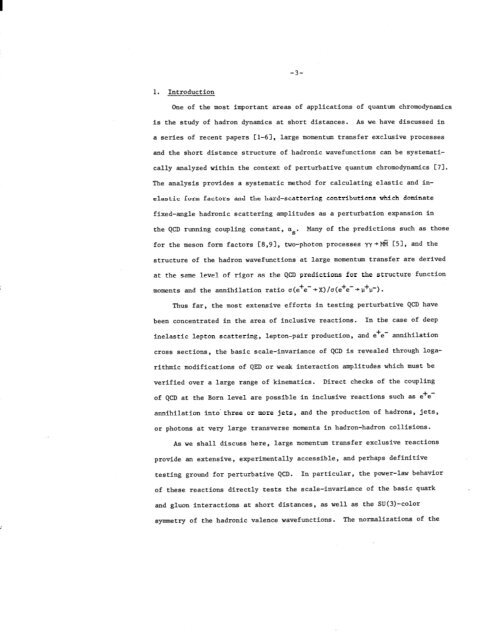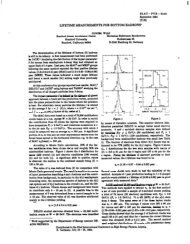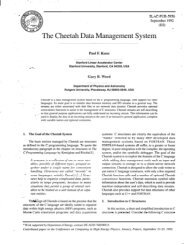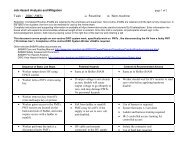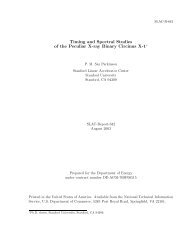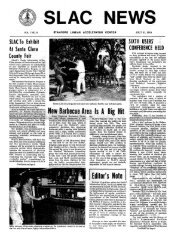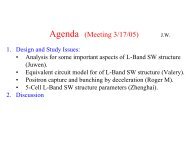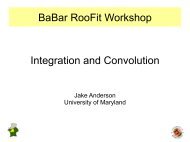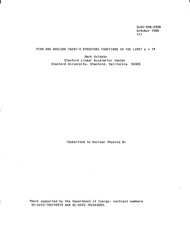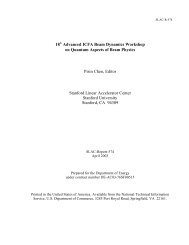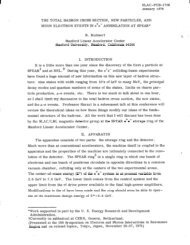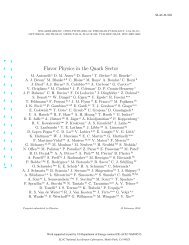slac-pub-2605 - SLAC - Stanford University
slac-pub-2605 - SLAC - Stanford University
slac-pub-2605 - SLAC - Stanford University
You also want an ePaper? Increase the reach of your titles
YUMPU automatically turns print PDFs into web optimized ePapers that Google loves.
1. Introduction<br />
-3-<br />
One of the most important areas of applications of quantum chromodynamics<br />
is the study of hadron dynamics at short distances. As we have discussed in<br />
a series of recent papers [l-61, large momentum transfer exclusive processes<br />
and the short distance structure of hadronic wavefunctions can be systemati-<br />
cally analyzed within the context of perturbative quantum chromodynamics [;I].<br />
The analysis provides a systematic method for calculating elastic and in-<br />
elastic form factors and the hard-scattering contributions which dominate<br />
fixed-angle hadronic scattering amplitudes as a perturbation expansion in<br />
the QCD running coupling constant, as. Many of the predictions such as those<br />
for the meson form factors C8,91, two-photon processes yy-+G C51, and the<br />
structure of the hadron wavefunctions at large momentum transfer are derived<br />
at the same level of rigor as the QCD predictions for the structure function<br />
moments and the annihilation ratio a(e+e-~X)/a(e+e--t11'~-).<br />
Thus far, the most extensive efforts in testing perturbative QCD have<br />
been concentrated in the area of inclusive reactions. In the case of deep<br />
inelastic lepton scattering, lepton-pair production, and e+e- annihilation<br />
cross sections, the basic scale-invariance of QCD is revealed through loga-<br />
rithmic modifications of QED or weak interaction amplitudes which must be<br />
verified over a large range of kinematics. Direct checks of the coupling<br />
of QCD at the Born level are possible in inclusive reactions such as +-<br />
e e<br />
annihilation into-three or more jets, and the production of hadrons, jets,<br />
or photons at very large transverse momenta in hadron-hadron collisions.<br />
As we shall discuss here, large momentum transfer exclusive reactions<br />
provide an extensive, experimentally accessible, and perhaps definitive<br />
testing ground for perturbative QCD. In particular, the power-law behavior<br />
of these reactions directly tests the scale-invariance of the basic quark<br />
and gluon interactions at short distances, as well as the SU(3)-color<br />
symmetry of the hadronic valence wavefunctions. The normalizations of the


